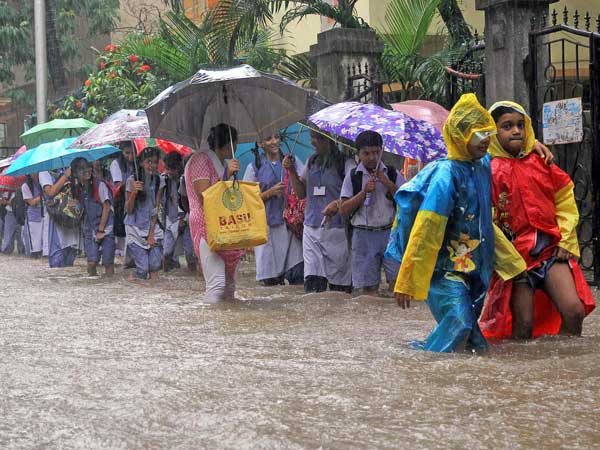Mumbai flooding: Why does the city submerge every year?
On Tuesday, Mumbai just added to the long list of towns and cities that have experienced flooding this year.
Torrential rain accompanied by strong winds hit Mumbai disrupting rail, road and air services, uprooting trees, swamping homes, and bringing the economic capital of India and the nearby satellite towns to their knees. It recorded 298 mm of rainfall on Tuesday, the highest in a day in August since 1997, according to data from the India Meteorological Department.

But what makes the city get a bad rap every year during this season is the inability of the administration to both forecast the torrential rains that strike the city and take due preventive measures.
An alert from the Indian Meteorological Department forecast for August 29 said, "heavy to very heavy rainfall very likely at a few places with isolated extremely heavy rainfall in North Konkan".
But a second alert came at 1pm that in the next four hours, Mumbai city, suburbs, Alibaug, Dahanu and nearby areas would face a deluge (ativrushti).
By then, the city's drains, capable of handling only 25mm of rain an hour, had already collapsed. Though, the Maharashtra government sprung into action, it was too late.
The apathy on Tuesday put the spotlight on 2005 rains.
Recommended Video

More than a decade ago, on 26 July 2005, at around 2.00 pm, the Mumbai Metropolitan region was struck by a severe storm and a subsequent deluge. The IMD station in Santacruz recorded 944 mm of rain for 24 hours ending at 8.30 on the morning of 27 July.
A cloudburst had released the huge downpour, bringing the city to its knees. It brought in its wake, landslides, outbreak of diseases, more than 24,000 animal carcasses, over 20,000 damaged vehicles, at least 2,500 buses and over 1 lakh houses.
It was the first time ever that Mumbai's airports Chhatrapati Shivaji International Airport, Juhu and Sahar aerodome - were closed for more than 30 hours because of heavy flooding on the runways, extremely poor visibility and submerged Instrument Landing System equipment. The airports subsequently opened on July 28 morning.
Since then the civic fathers of Mumbai seems to have learnt nothing.
While, experts blamed unhindered construction on floodplains and coastal areas, along with lack of storm-water drains and clogged waterways by plastic garbage, as reasons for the disaster.
Citizens say Mumbai's drainage system is not designed properly to sustain such heavy rains. Mumbai still has the British era drains which no way, could keep pace with increasing population and changing demography.
Following the 2005 deluge, BMC had announced the Brihanmumbai Stormwater Drainage (Brimstowad) project. Eight pumping stations were to be constructed as a part of the project. However, the project progressed at snail's pace which resulted the costs to escalate.
Besides,
the
timing
of
the
rains
has
also
been
creucial
in
the
present
havoc.
Mumbai
already
has
had
about
2,000
mm
of
rainfall
this
monsoon
season
since
June
which
is
more
than
normal.
The
soil
is
already
saturated
with
moisture.
Its
ability
to
absorb
water
is
diminished.
Here are some of the factors that can be attributed for the current deluge
- Use of a 100-year old drainage system ever since the colonial era.
- Desilting of Mithi river and other drain channels yet to be complete.
- Corruption in approval and grant of contracts.
- Delay in timely allocation of funds.
- Delay in storm water disposal system (Brimstowad) project , which included plans of 8 pumping stations and 58 projects to improve the city's century-old pipelines.
OneIndia News


 Click it and Unblock the Notifications
Click it and Unblock the Notifications



































